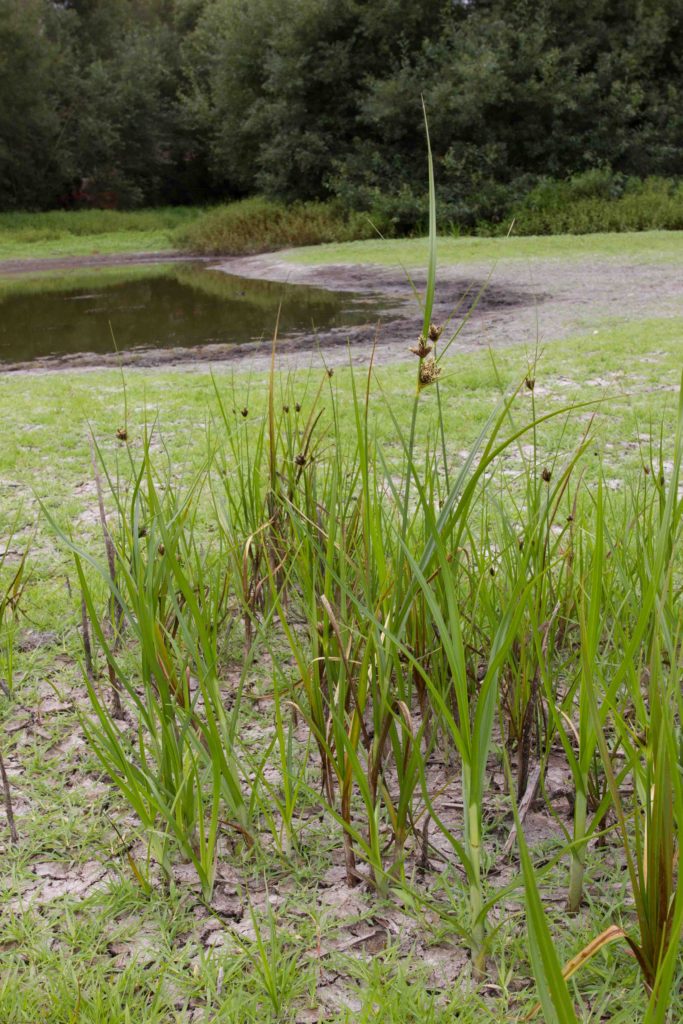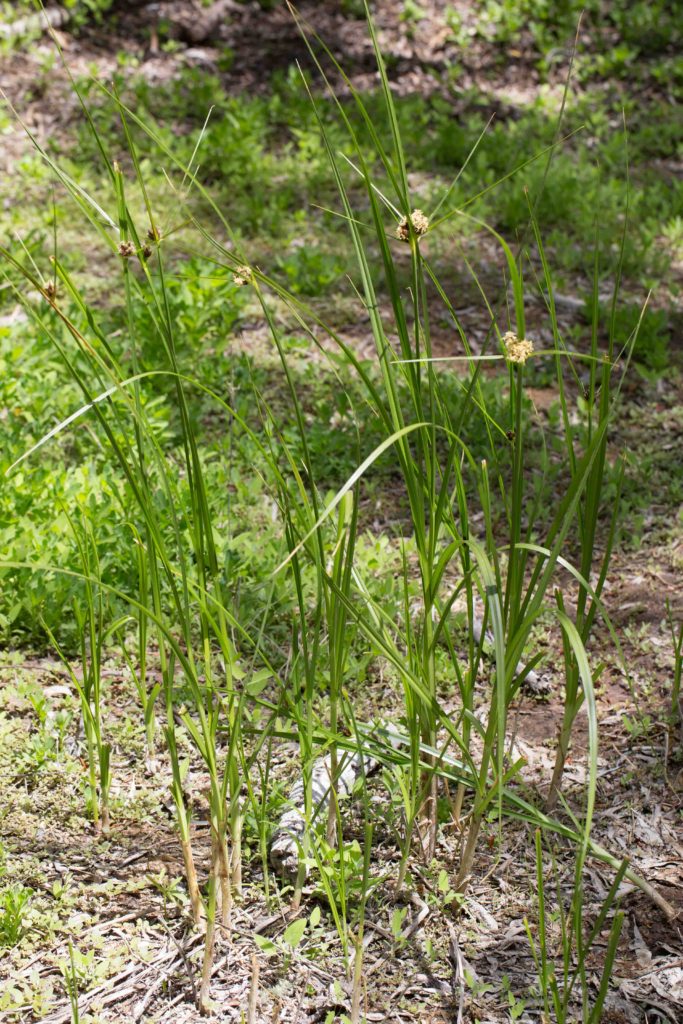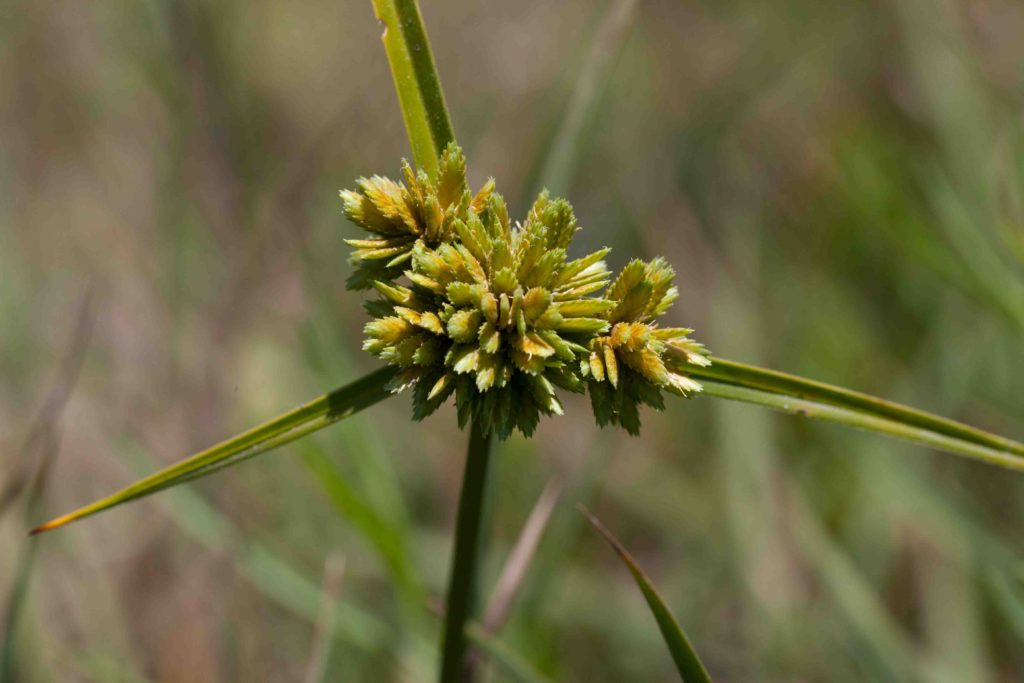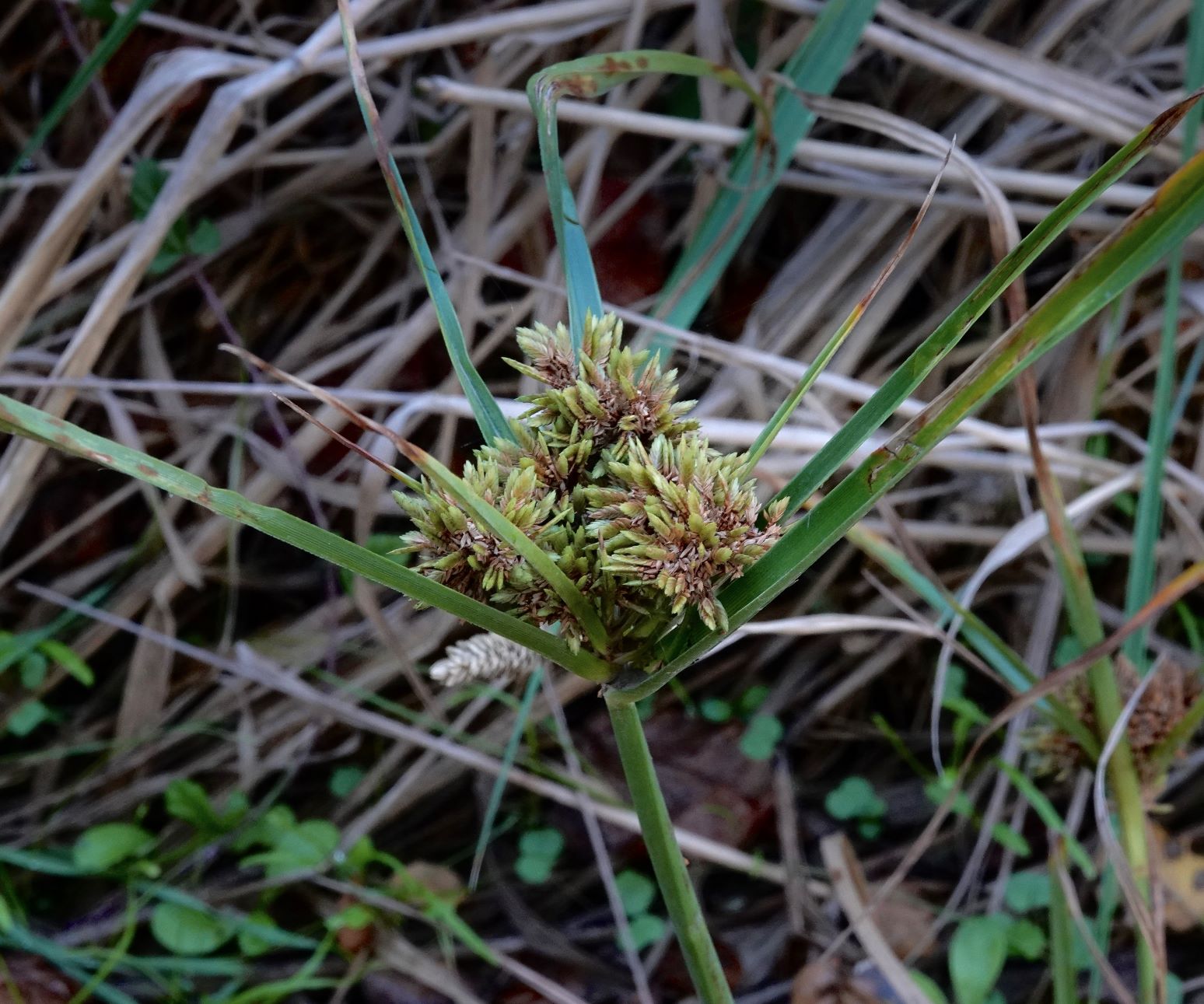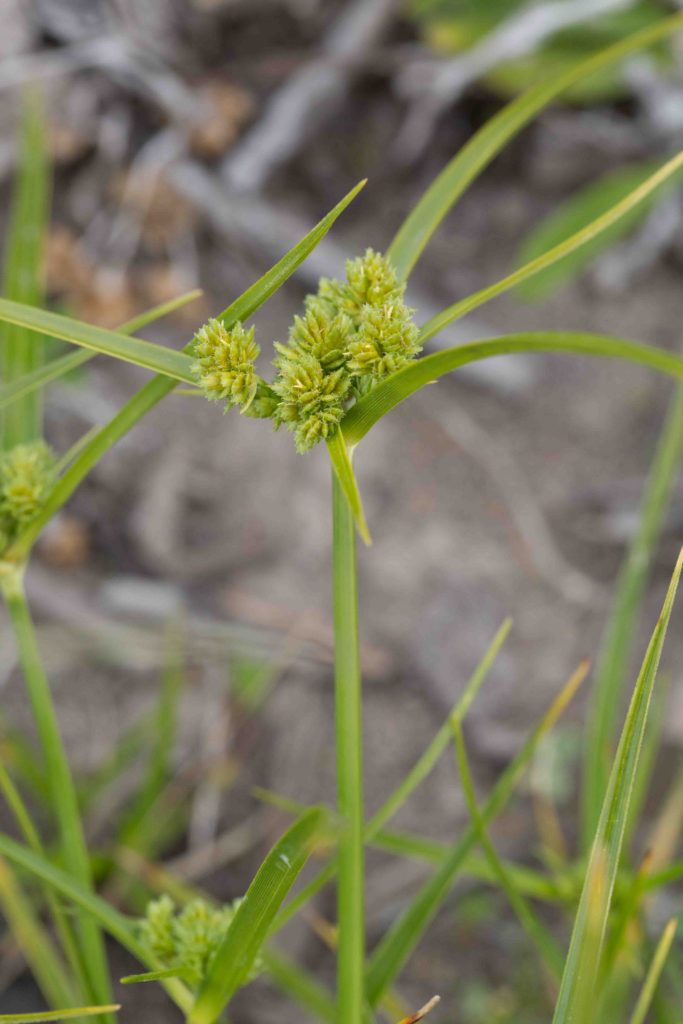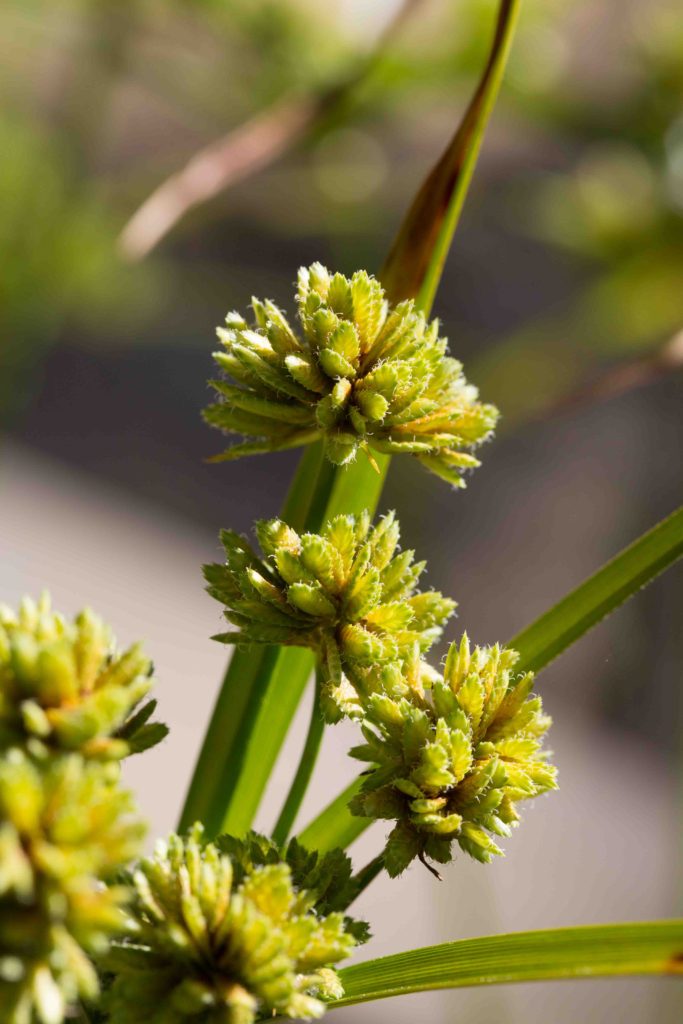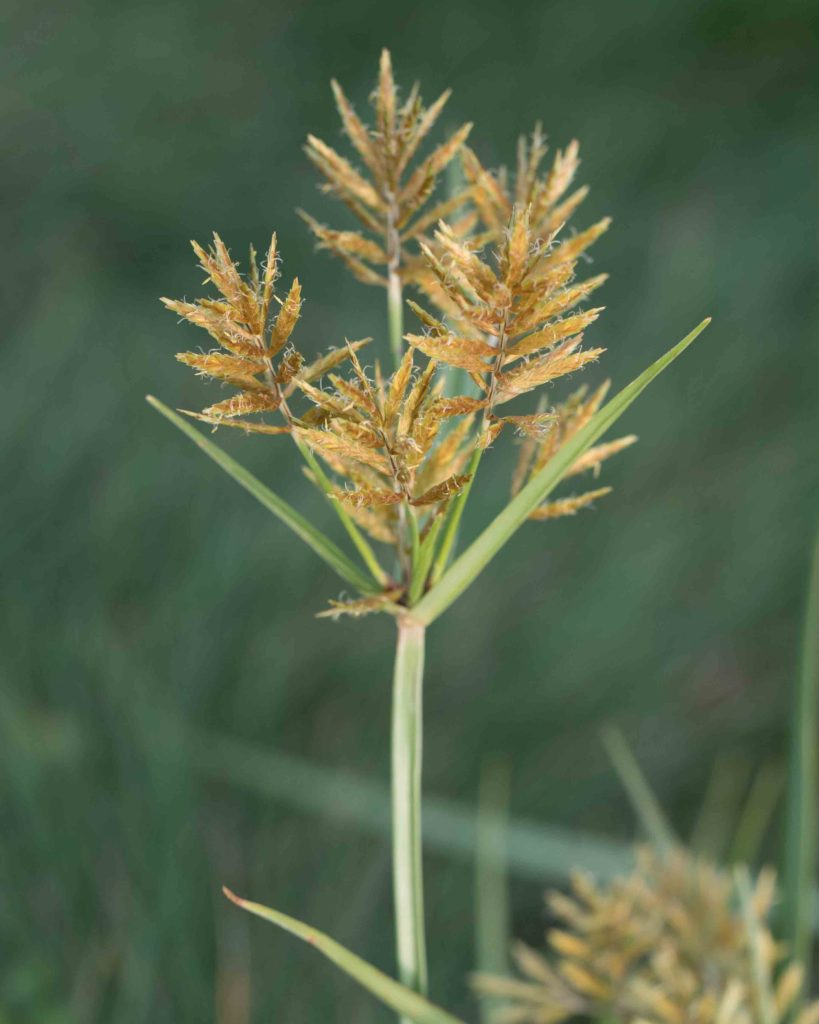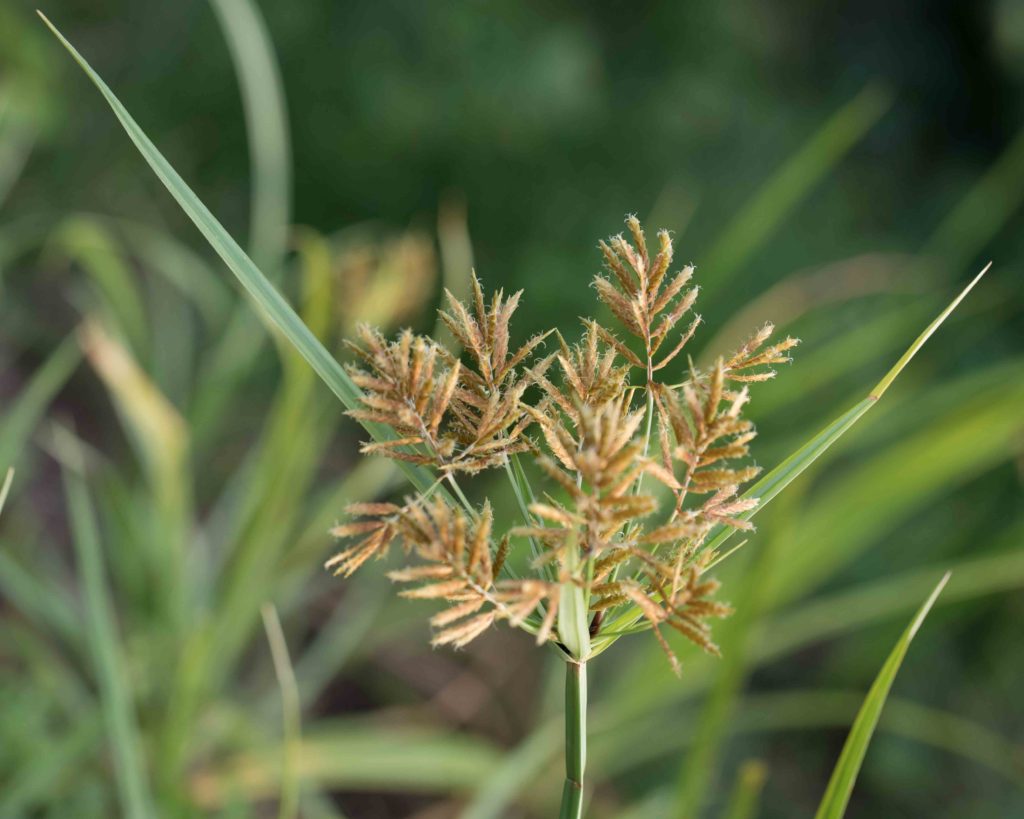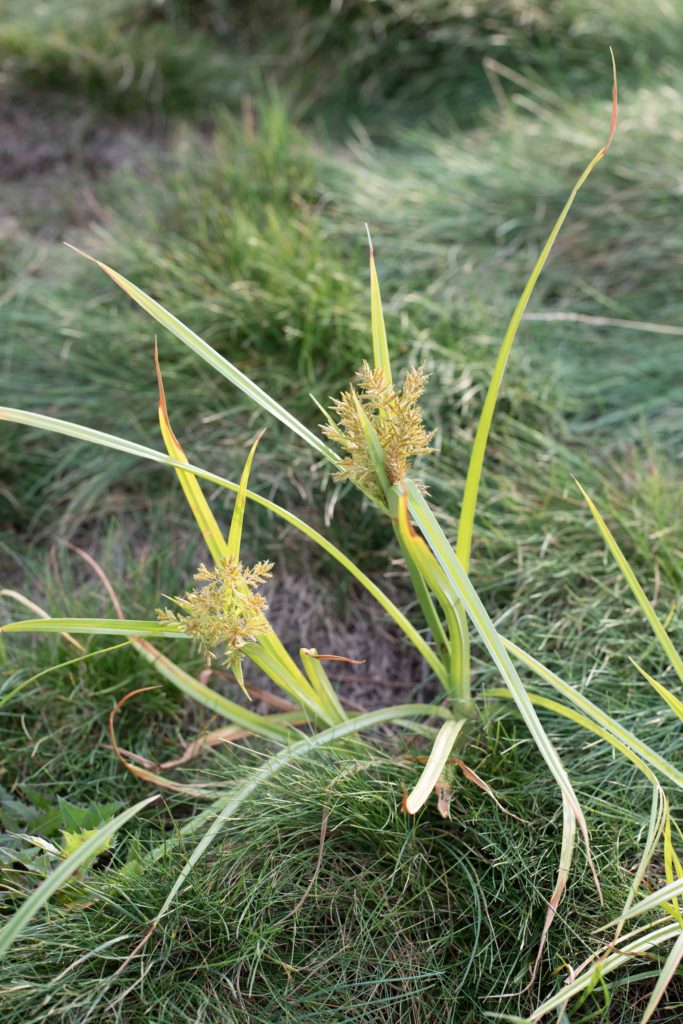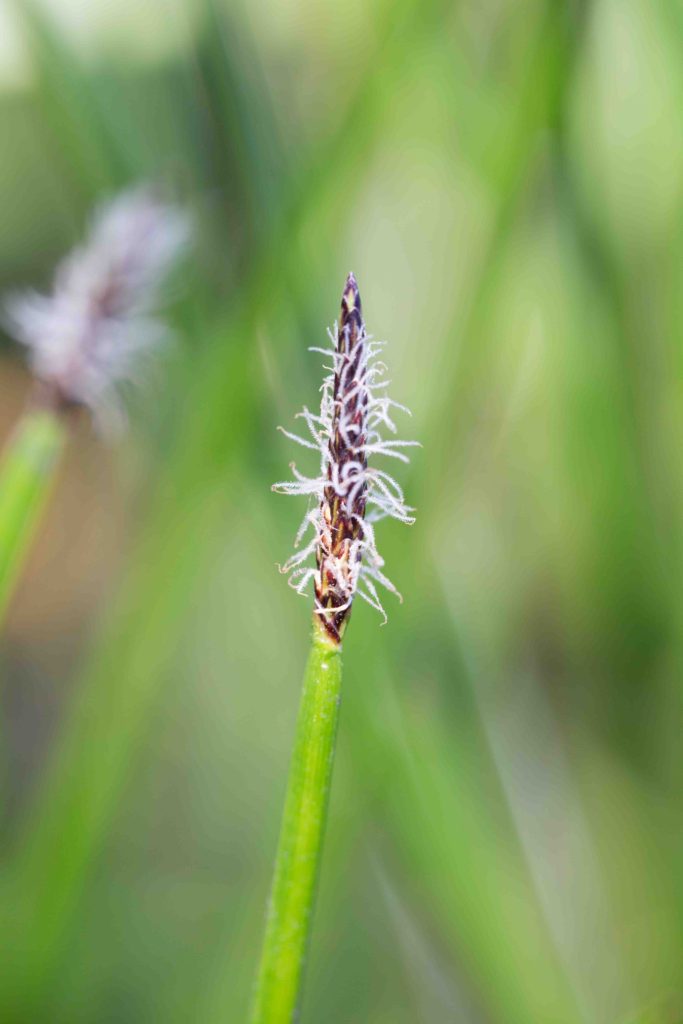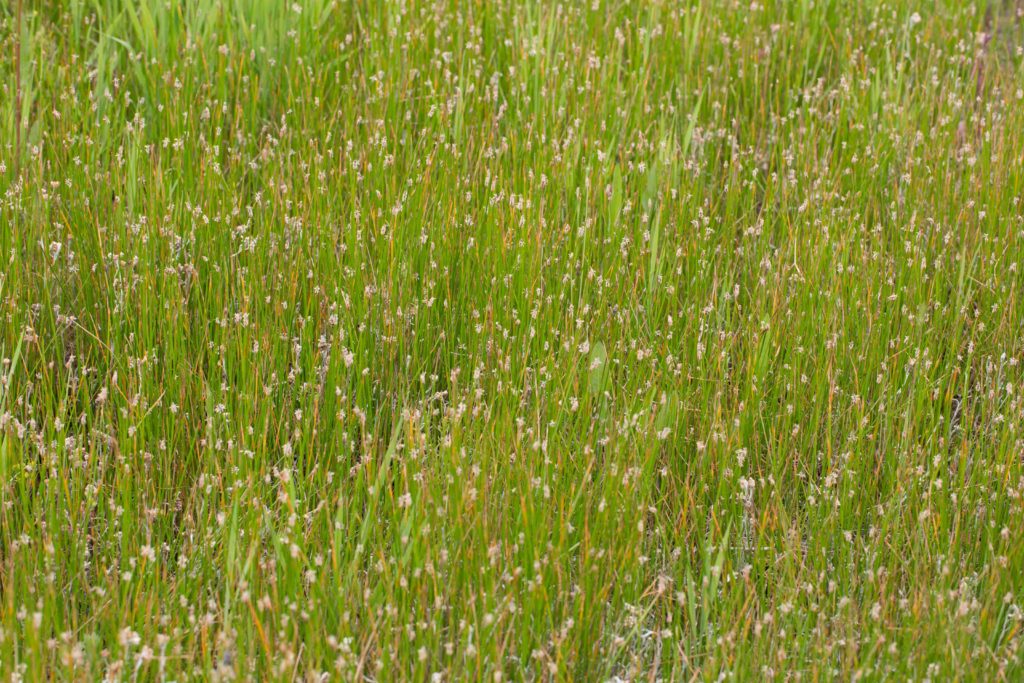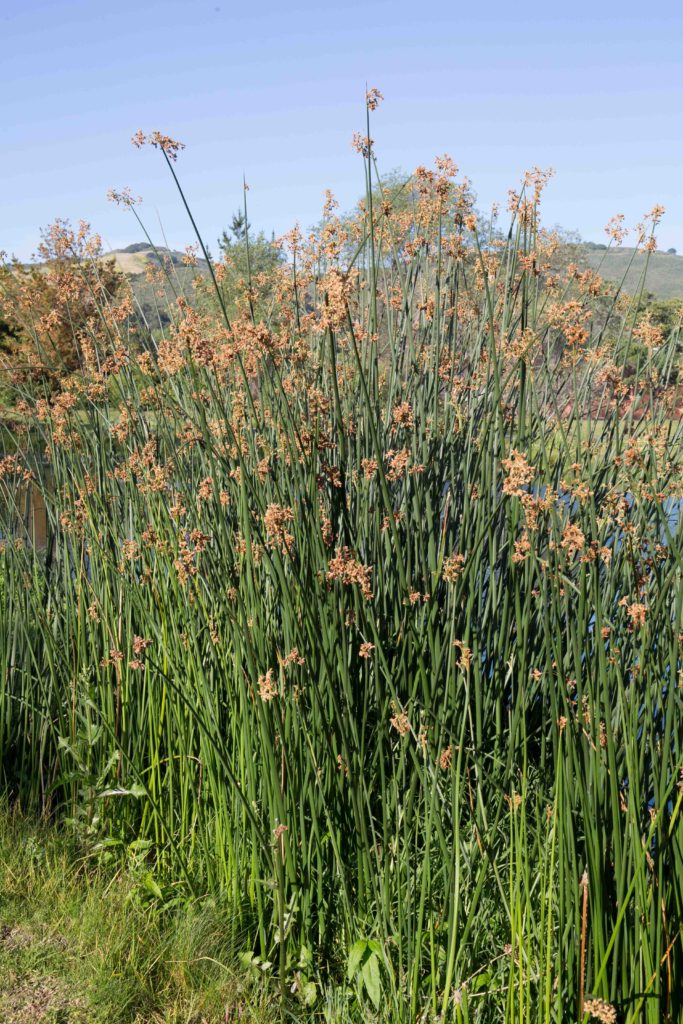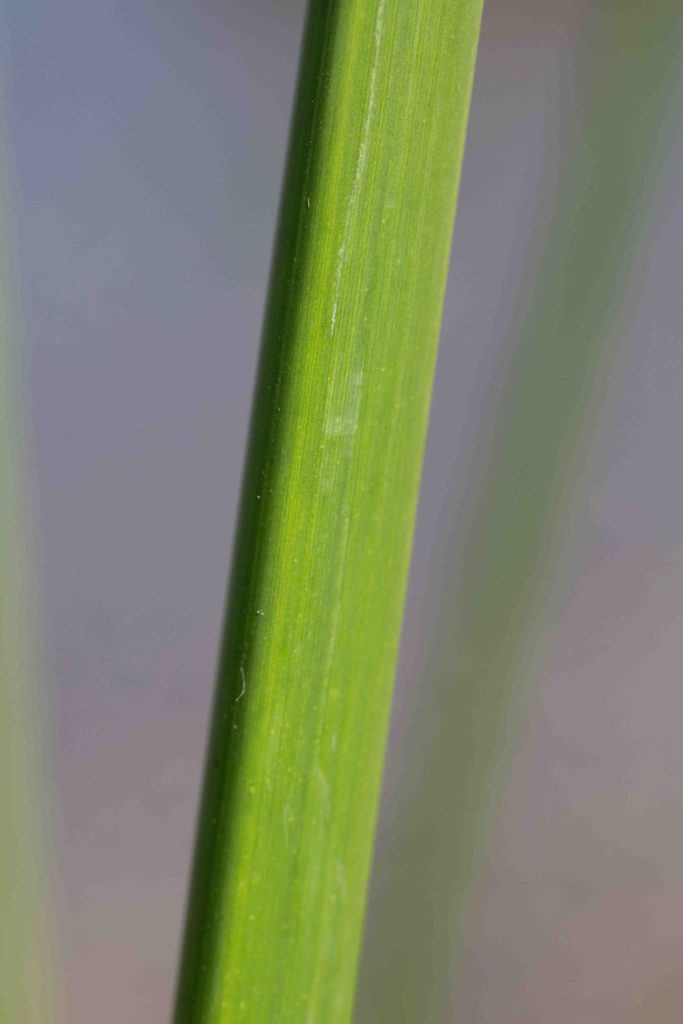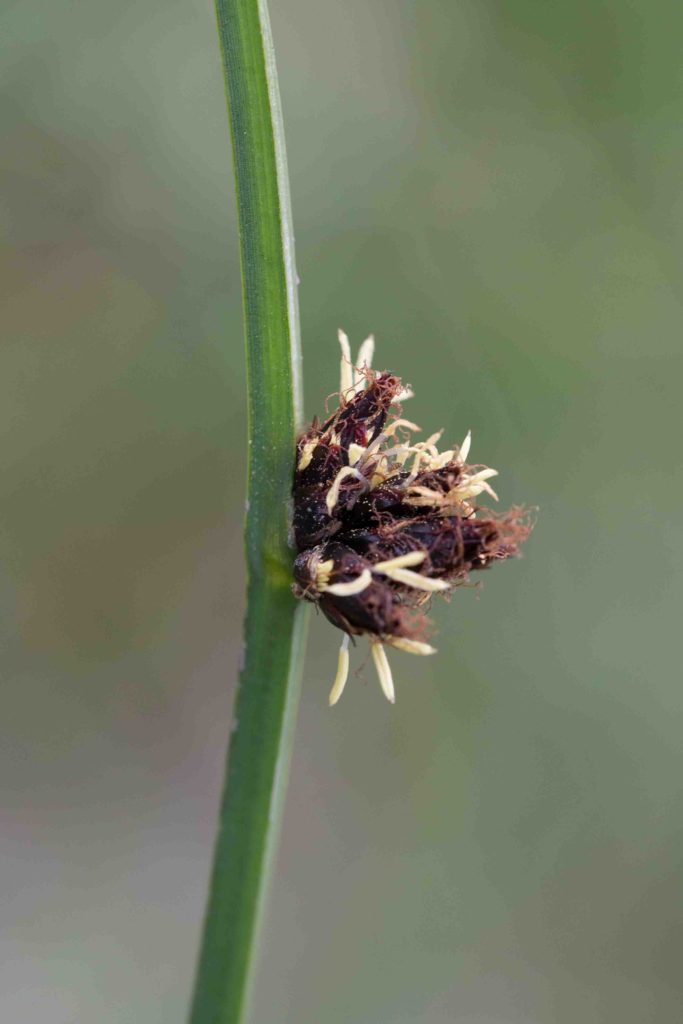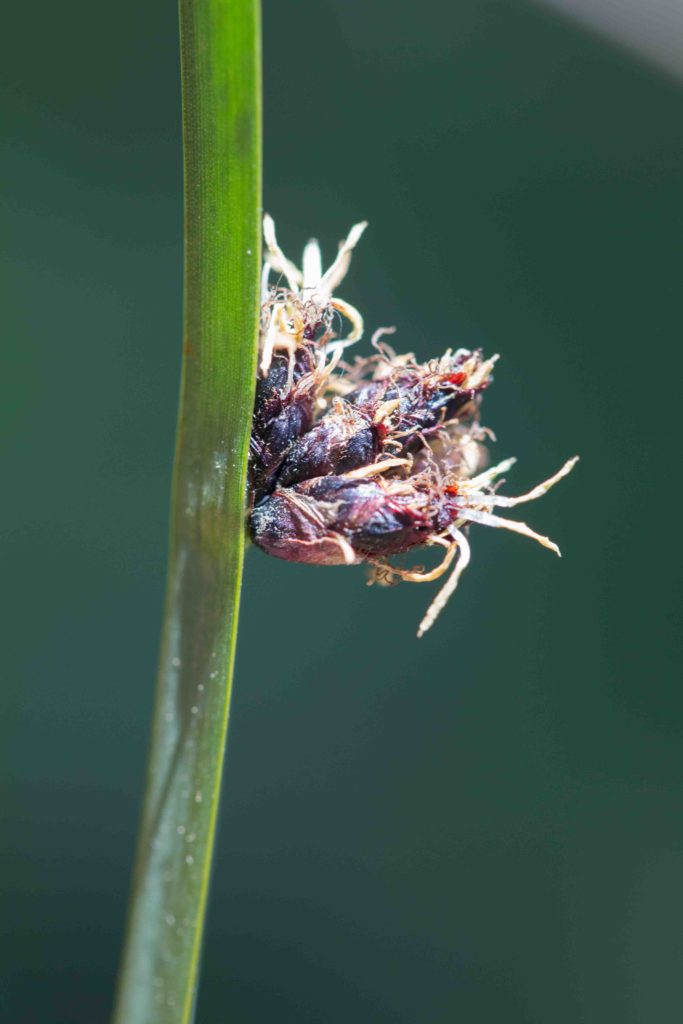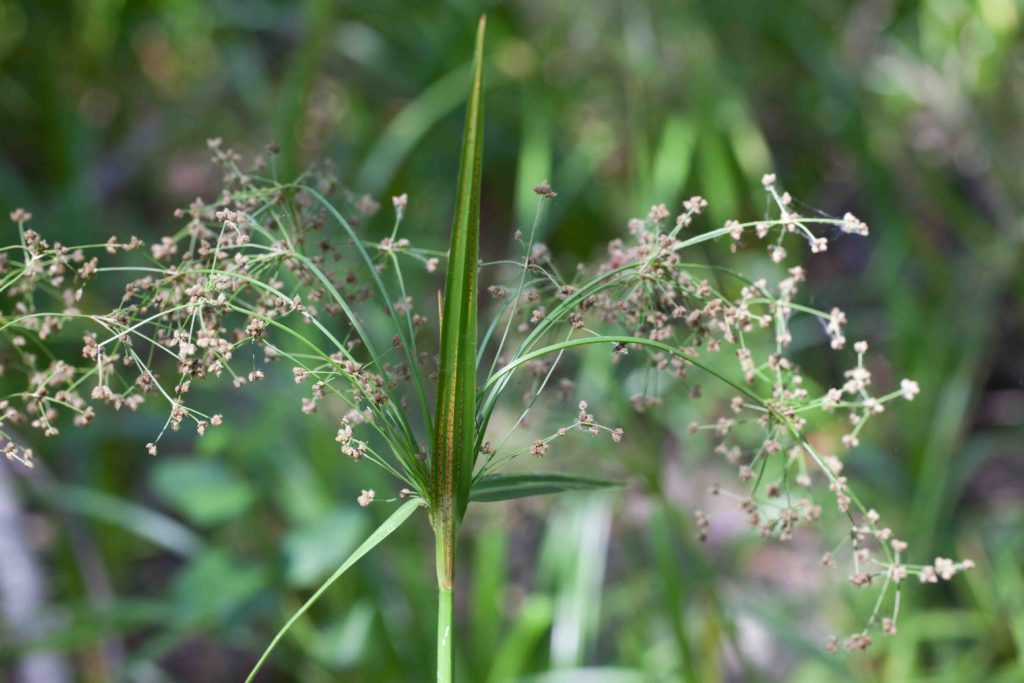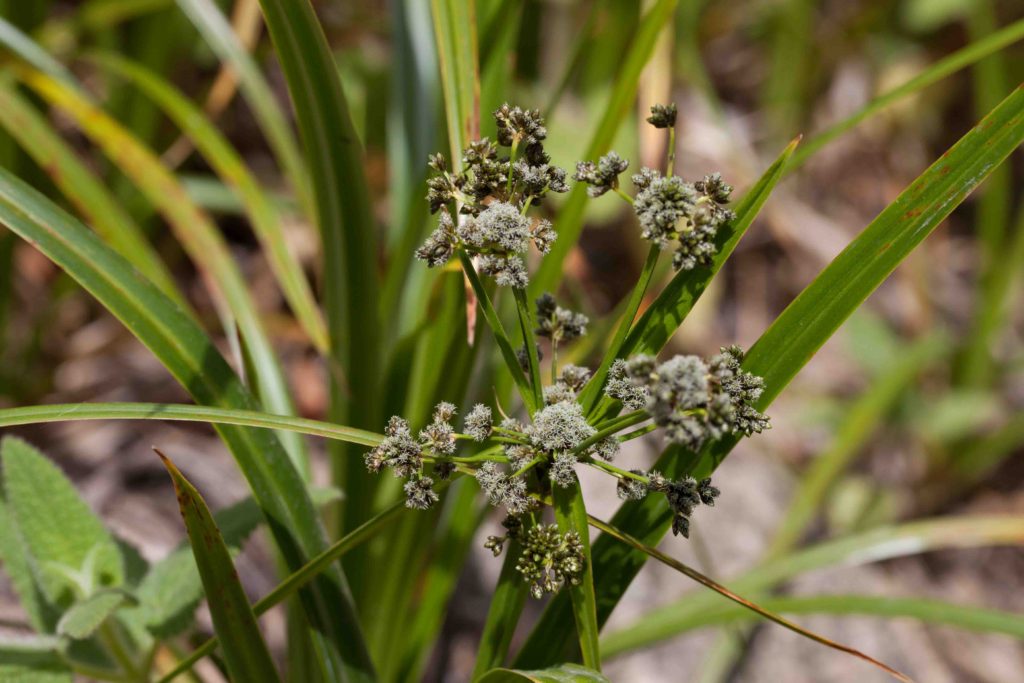Cyperaceae: Sedge Family — Tule, Bulrushes et al
“Reeds and rushes are round but sedges have edges”. There is some truth in this popular saying, but it is not always correct. However, it does explain why Bulrushes have triangular stems, which may be sharp-edged. This is because they are sedges (Cyperaceae), not reeds or rushes (Juncaceae).
Alkali Bulrush – Bolboschoenus maritimus subsp. paludosus
Blooms:
Summer
Plant Height:
50–150 cm
Flower Size:
Small cluster
Origin:
Native
Habitat:
Brackish to saline coastal or inland marshes
Notes:
Like Common Three Square Bulrush (Schoenoplectus pungens, see below), this has triangular, sharp-edged stems and flowers in a tight cluster. Unlike it, the inflorescence sits above long, slender (2–12 mm wide), leaf-like bracts. Stamens are yellow and stigmas in pairs.
Tall Cyperus – Cyperus eragrostis
Blooms:
May–Nov
Plant Height:
10–90 cm
Flower Size:
Medium cluster
Origin:
Native
Habitat:
Moist places
Notes:
This is a common, small sedge. It has long, narrow rays (distinct from the basal leaves) projecting from the tip of the stem. Each inflorescence comprises 20–150 flat spikelets, 5–20 mm long. Photo #2 by CJH.
Yellow Nut-grass – Cyperus esculentus var. leptostachyus
Blooms:
Summer
Plant Height:
15–50 cm
Flower Size:
Medium cluster
Origin:
Native
Habitat:
Cropland, disturbed places
Notes:
At first sight, this looks similar to Tall Cyperus (Cyperus eragrostis, see above). But it can be distinguished by its single, triangular stem and more open inflorescence. Each flower has 3 stamens (unlike the single stamen found on Tall Cyperus). In certain areas, it is regarded as a noxious weed.
Pale Spikerush – Eleocharis macrostachya
Blooms:
Spring–summer
Plant Height:
20–100 cm
Flower Size:
Small spike
Origin:
Native
Habitat:
Marshes & wet places
Notes:
This pale plant has its inflorescence in a narrow terminal spikelet, 5–40 mm long and 2–5 mm wide. Leaves are merely vestigial. Unlike many other members of this genus, the individual flowers have 2 stigmas rather than 3, and fruits are lens-shaped rather than plump or triangular. Can be found in extended colonies.
California Tule / Bulrush – Schoenoplectus californicus
Blooms:
Spring–summer
Plant Height:
< 4 m
Flower Size:
Large cluster
Origin:
Native
Habitat:
Wet places
Notes:
Much more common in Monterey County than Common Tule (Schoenoplectus acutus var. occidentalis). This plant is recognized by its three-sided (rather than round) bright green stems, triangular in cross-section with rounded corners. The inflorescence is in panicles, with a more or less erect subtending bract.
Common Three Square Bulrush – Schoenoplectus pungens var. longispicatus
Blooms:
Spring–summer
Plant Height:
< 2 m
Flower Size:
Small cluster
Origin:
Native
Habitat:
Fresh or brackish marshes or shores
Notes:
Very different from California Tule (Schoenoplectus californicus, see above), this also has triangular stems but with sharp corners and slightly concave sides. The flowers are in tight clusters of spikelets with sharp, red-brown scales. A specialized bract resembles a continuation of the stem beyond the spikelets.
Panicled Bulrush – Scirpus microcarpus
Blooms:
June–July
Plant Height:
60–160 cm
Flower Size:
Large cluster
Origin:
Native
Habitat:
Wet places, marshes, streambanks
Notes:
A common plant alongside streams, this has a distinctive spreading panicle of flowers, similar to California Tule (Schoenoplectus californicus, see above). However, this is more delicate, is wider spreading and produces small white flowers. Note the triangular upper stem.


